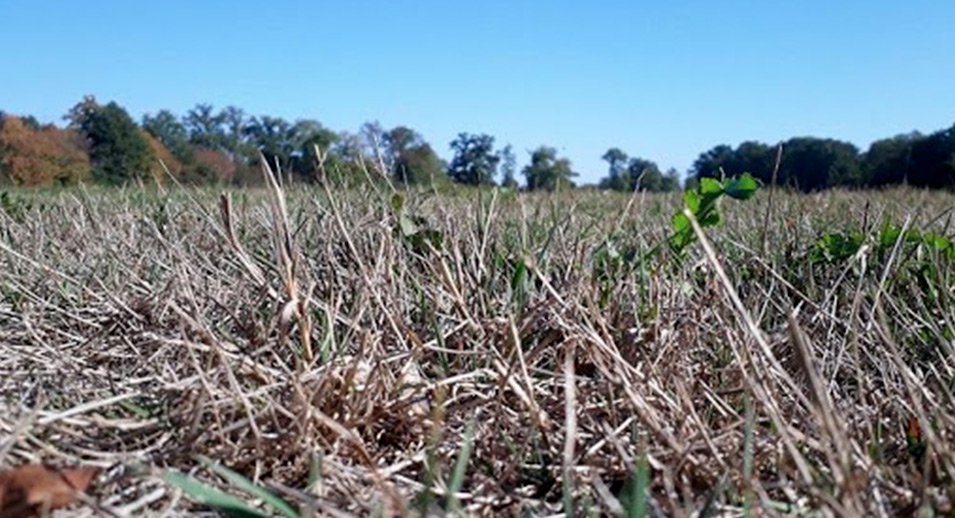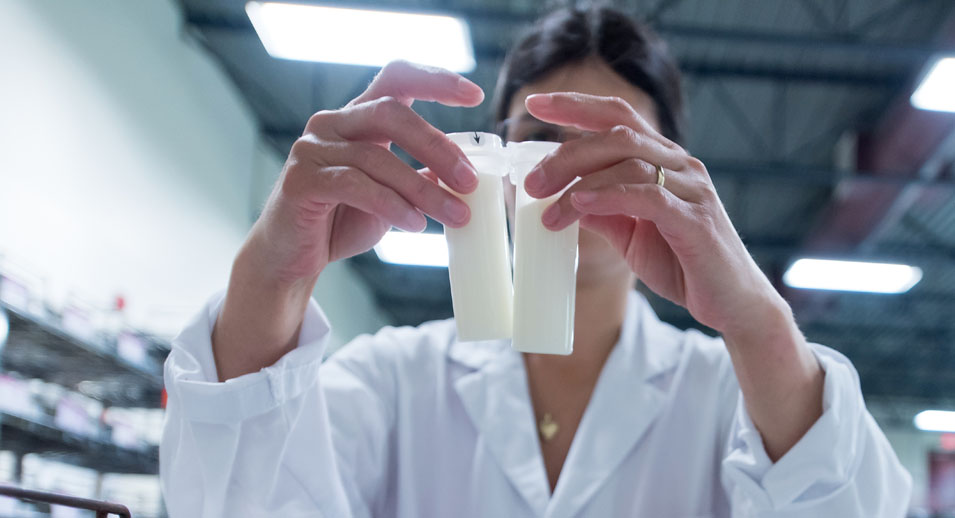Eight Strategies for Increasing Forage Stocks
- July 17, 2020
There are several options you can use, before the end of the season, to increase forage stocks if you expect to have a shortage. We have gathered a list of strategies and useful tips to be applied at harvesting and in the field.

The cost and applicability of these strategies can vary, however, according to different regions and farms. Our advisors are there to help you to choose the best option for your situation. You may also want to check on our list of solutions for coping with a forage shortage in the barn.
1. Reduce Silage Losses at Storage and Feed Out
- Work cleanly
- Minimize the time between mowing and silo filling
- Harvest at the recommended dry mater level
- Attain anaerobic conditions as quickly as possible
- Chop at the appropriate length
- Maintain an airtight system
- Take a sufficient quantity, depending on the season
For more information about this strategy:
2. Fertilise with nitrogen to increase yield
- If the drought persists
- Nitrogen will not be assimilated
- Caution: if rainfall resumed in the weeks preceding the harvest, the forage harvested could have elevated nitrate levels
- If the soil is deeply moist
- Fertilize according to the recommendations in your nutrient management plan (generally between 50 and 75 kg of N/ha)
3. Proceed with a fall mowing (probable yield of 1.0 to 2.5 t DM/ha)
- Wait at least 50 days after the last harvest
- Ideally, mow just before there is a risk of killing frost (maximum 48 hours later)
- Leave a taller thatch for better snow retention (minimum of 10 cm, or 4 inches)
4. Ensile crops that were not intended for forage production
If you do not have enough storage capacity, you can use bag silos or ensile on top of grass silage. Many crops can be ensiled and fed to ruminants:
- Grain corn (probable yield of 8.5 to 17.5 t DM/ha)
- Watch nitrate levels in drought conditions
- Small grain cereals (probable yield of 4.0 to 8.5 t DM/ha)
- Harvest near heading for lactating cows
- Harvest at the milk development or dough development stage for dry cows
- Soybeans (probable yield of 5.5 t DM/ha)
- Harvest at R3-4 stage
- Green manure- legume
5. Purchase forages
- Make any purchases as early as possible
- If possible, avoid paying more than the forage feed value
- Consult the Haybec site to find hay and straw sellers
6. Plant Annual Emergency Crops
For this strategy, it is recommended to avoid working the soil as much as possible (increases drying). In addition, for it to work, it must rain on the seedlings. Rolling is also very important to improve contact between the seed and the soil. Ideally, these crops should be harvested as silage, as it is more difficult to make hay in the fall. In any case, it must be mowed just before a frost to avoid a decrease in nutritive value.
Several options:
- Oat forage (probable yield 1.0 to 2.0 t DM/ha)
- Seed as early as possible in August
- Can be combined with annual peas or clover
- Sudan grass or sorghum
- Seed before the end of July
- Can be combined with clover.
- Egyptian clover
- Seed as early as possible in August
7. Specific Pasture Strategies
- Reduce the pressure on existing pastures
- Complement better in the barn
- Put the cows in at 25 cm (10 in.) and bring them out at 10 cm (4 in.)
- Offer more pasture area
- Offer pasture that is too short to be mowed mechanically
- Seed an annual species (Table 1), consult your advisor for specific pasture recommendations for annual plants
Table 1. Annual Crops can be Seeded During the Summer for Grazing.
Annual Crop | Latest Seeding Date | Possible Yield (t DM/ha) | Recommended Grazing Stage |
Oats | End of August | 2.5 | Jointing or early heading stage |
Fodder Cabbage | End of July | 9.0 | 10-15 weeks after seeding |
Rapeseed | Mid-July | 7.0 | 10-12 weeks after seeding |
Fodder Turnip | Mid-July | 6.0 | 10-12 weeks after seeding |
Fall Rye | End of August | 1.0-1.5 | 7 weeks after seeding or early the following spring |
Fall Triticale | Mid-September | 1.0-1.5 | 7 weeks after seeding or early the following spring |
8. Prepare now for better yields next year
Act now to maximize the chances of having better yields earlier next year. The following are two possible options:
Seeding Meadows in August
- Requires 6 to 8 weeks of growth without freezing
- Do not use cover plants
- Seed only when several days of rain are predicted
- Consider using species that are more drought resistant
Seeding Fall Rye (probable yield of 4.5 t/ha)
- Seeding possible up to the end of September
- Harvest next spring (mid-May) at the boot stage
- Possibility of setting up a meadow
- Seed early within the rye

















